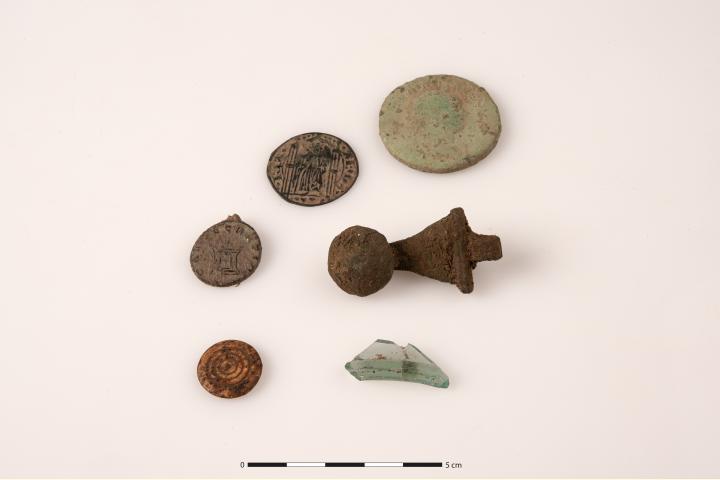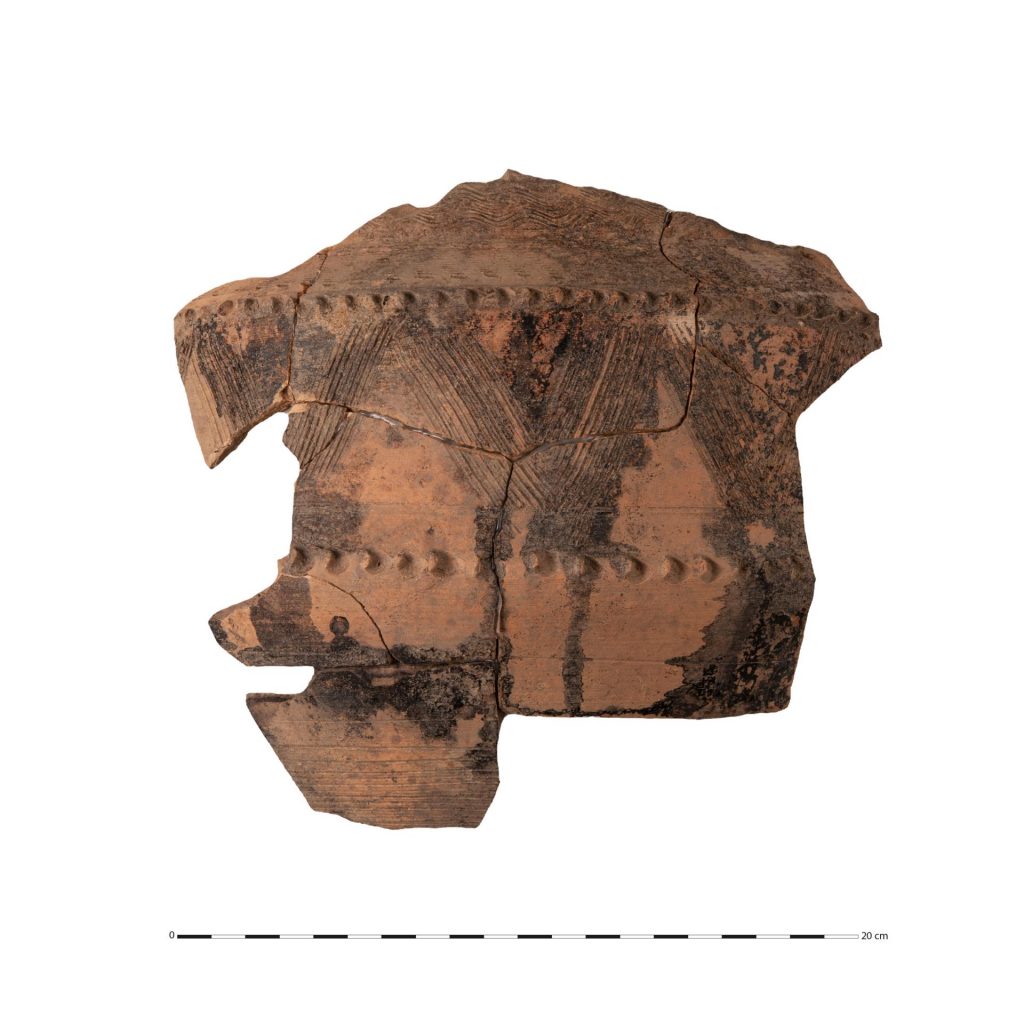From the trash and to the museum. It is the likely result of a Roman-era statuette of Venus excavated in February from an ancient rubbish heap in north-west Brittany France.
The well-preserved four-inch-tall terracotta figurine shows the Roman goddess of beauty holding a garment in her left hand and a braid of hair in her right. The depiction is known as Venus Anadyomene, Greek for “Venus rising out of the sea”, a form depicted in well-known paintings by Sandro Botticelli and Titian.

A fragment of a statuette of Venus. Photo: Emmanuelle Collado, INRAP.
The statuette is made of Burgundy clay and dates from the end of the 1st century or the beginning of the 2nd century, as the hairstyle of Venus suggests. There was a fragment of another Venus found at the site and experts believe they may have been intentionally placed at the base of the site to bring good luck.
“You regularly find this kind of statuette during excavations, but they are rarely as well preserved and as special as this one,” site manager Nicolas Ménez told the French newspaper. Figaro. “We haven’t cleaned it yet and we want to keep all traces of pigment. We are only at the beginning of the history of this Venus.

Small objects found on site including coins, a metal clasp and a fragment of glass. Photo: Emmanuelle Collado, Inrap
The Venus statuette was part of a larger 1,800-year-old cache of artifacts that was discovered in an ancient Roman shale quarry at the site of today’s Rennes. The town was founded as Condate in the 1st century and had been the main settlement of the Gallic Riedones tribe.
The excavation, which occupies an area of approximately 10,000 square feet, is being led by a team from National Institute for Archaeological Research. He also discovered fragments of pottery, plates, coins, clothespins, shards of glass, crockery and other terracotta statuettes at a site that reaches 2 meters deep.

A fragment of a vase from the site of today’s Rennes. Photo: Emmanuelle Collado, INRAP
The Romans needed large quantities of stone to build houses, public buildings and walls, which led to the development of quarries in the territories over which they had influence. The majority of the rock excavated from the site was shale, which was used in local foundations as mortar. When usable stone from the Condate quarry ran out in the late 2nd century, it became a dump.
Archaeologists believe the quarry and later landfill were even larger than the current site and pass under what is now a nearby primary school.
More trending stories:
A museum has located a missing figure that was cut out of this 17th-century family portrait
Ai Weiwei has recreated Claude Monet’s iconic “water lilies” using 650,000 multicolored Lego bricks
London will honor the victims of the transatlantic slave trade with a new memorial in Docklands
Follow Artnet News on Facebook:
Want to stay one step ahead of the art world? Subscribe to our newsletter to receive breaking news, revealing interviews and incisive reviews that move the conversation forward.
